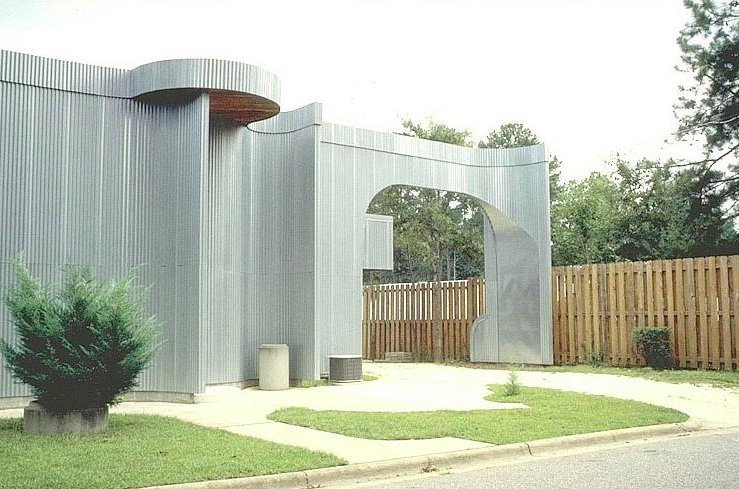Precision and meticulousness. These are the two words that describe best Robert Faust, one of the most influential architects associated with Auburn University and the state of Alabama.
Born in New Orleans, he studied architecture at Tulane for a short while, before transferring to the University of Oklahoma, which offered him many opportunities.
He graduated in 1956, and two years later he started working with Bruce Goff, the leader of his former university. From 1958 to 1961, Faust learned as much as he could from Goff, as well as from the constructors on the site of a home project in coastal Mississippi, where he was supervising their work. This is the period that had the most impact on his design philosophy.
A few years later, he started working with Albert Ledner, one of Frank Lloyd Wright’s former associates. Even though they worked together for one year (1964 to 1965), the collaboration was very fruitful for Faust, because he learned how to deal with the legal and ethical issues in projects of residential architecture.
In 1965 he started teaching at the University of Iowa. Three years later, in 1968, he was a teacher at the University of Auburn, Alabama.
 Faust knew that a sure way to become a great architect is to look for opportunities, so that’s what he did. After arriving in Auburn in 1968, he found some land where he started his experiment named Corrugated Alabama.
Faust knew that a sure way to become a great architect is to look for opportunities, so that’s what he did. After arriving in Auburn in 1968, he found some land where he started his experiment named Corrugated Alabama.
His plan with the experiment was to create two townhouses and then to raise funds for the another two. Because he knew that by being his own client, he’d understand better what the expectations of one are, he planned to move in the newest unit built, and rent out the other townhouses.
Corrugated Alabama was not the only project in which he was the land owner, the architect, and the client. But it was the amplest. It took more than 20 years to complete it, and university graduates were paid to lend a helping hand. In exchange, they either had to let themselves be inspired by a perfection-driven Faust or perceive all the rigor as a burden.
Tell us more about your project.
We are a small Design-Centered Practice Studio that promotes cost effective Green Building technologies.
We provide a wide range of services, and no job is too big or too small for our experience. With over 15 years of commercial experience, we can design a wide variety of architectural styles that can fit most needs or tastes.
